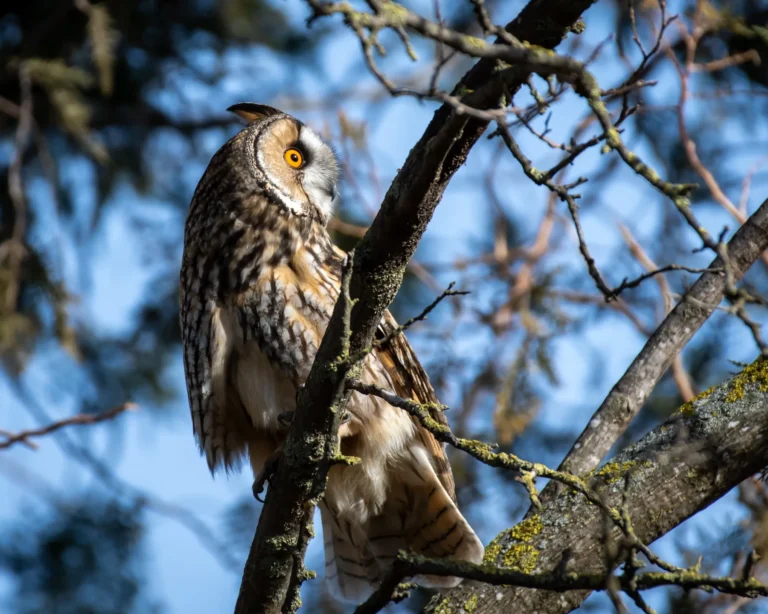
Long-eared owl

Description and how to observe Long-eared owl:
Long-eared owl (Asio otus - Long-eared owl) is a medium-sized species of owl, recognisable by its striped brown plumage and large, orange, intensely coloured eyes. It is easily camouflaged in its natural habitat thanks to plumage adapted to mimic tree bark. Reaching a height of about 35 cm and with a wingspan of between 90-100 cm, the woodcock is fairly easy to recognise, especially if you observe it at rest, with its distinctive raised feathered ears giving it a distinctive look.
To observe this species in the Danube Delta, it is best to explore areas of meadow woodland and dense vegetation, especially at sunset or sunrise. Typically, the night herons rest in the trees during the day, well hidden from prying eyes, and in the evening they become active and their characteristic calls can be heard.
What it feeds on Long-eared owl:
The long-eared owl feeds mainly on small mammals such as mice, voles and occasionally rats, but may also consume small birds or insects. This species is a nocturnal predator, and its excellent vision and keen hearing help it identify and capture prey even in complete darkness. It's a silent hunter, travelling noiselessly thanks to specially adapted feathers for silent flight.
Threats:
Although the long-eared owl population is stable globally, it faces some significant threats in the Danube Delta. These include the degradation of natural habitats through deforestation, the expansion of agricultural areas and the use of pesticides, which reduce the numbers of prey. Accidental hunting and disturbance of nesting sites are other important threats to the species.
Ecological role:
More information on Asio otus:
The long-eared owl is protected in Romania and the Danube Delta provides a favourable environment for the survival of this species. In conservation programmes, observation and monitoring of this nocturnal predator are essential to prevent its populations from declining.
Discover now the most beautiful places in the Danube Delta!
In the following pages, you will find detailed information about:
- Top tourist destinations: Traditional villages, nature reserves, tourist trails and much more.
- Activities and attractions: Everything you need to know about boating, fishing, bird watching, cycling and other activities.
- Accommodation and catering: Accommodation to suit all budgets and restaurants serving traditional cuisine.




